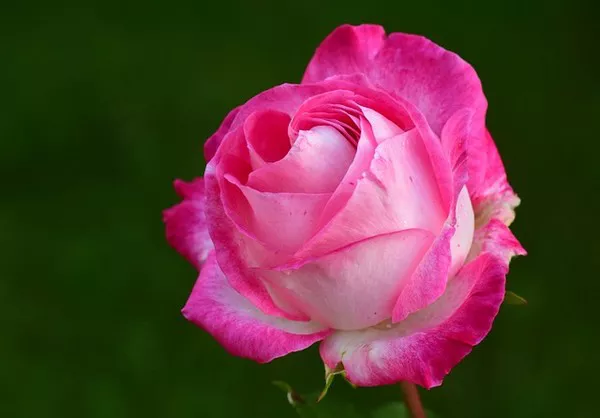Flowers have long captivated human emotions and imaginations with their vibrant colors and delicate beauty. Beyond their aesthetic appeal, many flowers also hold deep symbolic meanings that transcend cultural boundaries. One such flower color that has consistently carried a powerful symbol is pink. In this article, we will delve into the intricate world of pink flowers and explore the multifaceted symbolism they represent.
The Universality of Floral Symbolism
Flowers have been used as symbols in human culture for centuries. Their meanings can be universal, but they can also vary across different cultures and contexts. Pink, in particular, is a color that has a wide range of symbolic associations. It can represent love, femininity, gratitude, innocence, and so much more. Let’s take a closer look at some of the most common and poignant meanings attributed to pink flowers.
1. Love and Romance
One of the most prevalent associations with pink flowers is love, especially romantic love. Pink is often seen as the color of passion and tenderness combined. When we think of pink flowers, the first that come to mind are usually roses. Pink roses, in particular, are often exchanged between lovers as a symbol of affection and admiration. They convey a message of admiration, gratitude, and a deep appreciation for someone’s beauty.
In addition to roses, pink tulips and carnations are also commonly associated with love and romance. Gifting a bouquet of these flowers can express your affection and desire for a romantic connection. The delicate and gentle nature of pink makes it an ideal choice for conveying feelings of love.
2. Femininity and Grace
Pink is typically seen as a feminine color. As such, pink flowers often symbolize femininity and grace. They represent the beauty and elegance that are often associated with women. Pink blooms can be gifted to celebrate and honor women in various contexts, such as Mother’s Day or International Women’s Day.
3. Innocence and Youth
Another aspect of pink flower symbolism is its association with innocence and youthfulness. Lighter shades of pink, such as pastel pinks, are often linked to qualities like purity and childlike innocence. These flowers can be given to celebrate the birth of a baby or to convey best wishes to someone embarking on a new journey in life.
4. Compassion and Sympathy
Pink flowers also hold a unique place in the world of sympathy and compassion. While white flowers are traditionally used for mourning and funerals, pink flowers can express sympathy in a more gentle and supportive manner. They convey a message of care, understanding, and emotional support during difficult times.
5. Gratitude and Appreciation
Expressing gratitude is another powerful way to use pink flowers. The color represents thankfulness and appreciation. Whether it’s to thank a friend for their support or to show appreciation to a colleague, a bouquet of pink flowers can convey your heartfelt thanks in a visually pleasing manner.
6. Awareness and Support
Pink flowers, especially when combined with ribbon or other symbolic elements, are often used to raise awareness and show support for breast cancer patients and survivors. Pink has become the color associated with breast cancer awareness, and pink flowers serve as a visual symbol of solidarity and hope in the fight against the disease.
Varieties of Pink Flowers and Their Unique Symbolism
The world of pink flowers is vast and diverse, with numerous varieties each carrying their own unique symbolism. Let’s explore a few of these popular pink blooms and their individual meanings:
Pink Roses: As mentioned earlier, pink roses symbolize love and affection. The shade of pink can convey different emotions within this context. Light pink roses represent admiration, gratitude, and sweetness, while deeper shades of pink signify appreciation and gratitude.
Pink Peonies: Peonies are known for their lush and opulent appearance. Pink peonies symbolize romance, prosperity, and good fortune. They are often used in weddings to represent a happy and loving union.
Pink Tulips: Pink tulips convey feelings of love and affection. They can also symbolize confidence and trust in a relationship. Light pink tulips are associated with happiness and joy.
Pink Carnations: Carnations come in various colors, and pink carnations are linked to feelings of gratitude and admiration. They are often given as a token of appreciation.
Pink Cherry Blossoms: Cherry blossoms are revered in Japanese culture, and their pink blooms symbolize the transient nature of life and the beauty of impermanence. They also represent renewal and the arrival of spring.
Pink Orchids: Orchids are known for their exotic beauty and elegance. Pink orchids symbolize femininity, grace, and admiration. They make excellent gifts to convey admiration for someone’s achievements.
Pink Hydrangeas: Pink hydrangeas represent heartfelt emotions, especially gratitude and appreciation. They can be given to express thanks or to celebrate a special occasion.
Conclusion
Pink flowers, with their delicate and enchanting hues, have an enduring symbolism that resonates with people across the world. Whether expressing love, celebrating femininity, offering sympathy, or conveying gratitude, pink blooms have a versatile language of their own. Their meanings are as diverse as the many shades of pink found in nature, making them a timeless and cherished choice for floral gifts and expressions of sentiment. So, the next time you receive or give a bouquet of pink flowers, remember the rich tapestry of emotions and meanings they carry, adding depth and beauty to the gesture.


